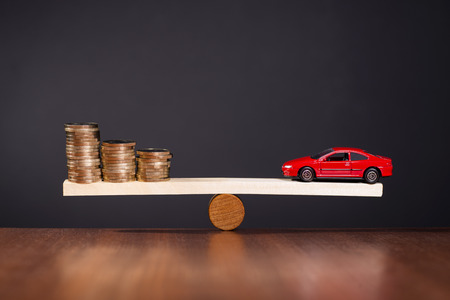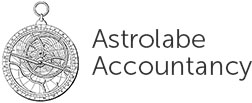How Best to Finance Business Assets
 Lease? Hire Purchase? Bank loan? Chattel Mortgage? Which is the best way to go when you need to purchase a business vehicle or equipment?
Lease? Hire Purchase? Bank loan? Chattel Mortgage? Which is the best way to go when you need to purchase a business vehicle or equipment?
As a rough guide, a chattel mortgage, commercial hire purchase or bank loan is better if you want to keep the asset for longer than the period of the financing arrangement. A finance lease may be better if you plan to replace the asset at the end of the finance period. A novated lease is suitable for an employee car salary packaging arrangement.
However you need to consider all costs, including interest, loan charges and tax.
Let’s consider the differences between the available finance options:
In a finance lease the financier purchases the car or other asset and leases it to you for a fixed monthly rental while retaining ownership of it. At the end of the lease period you can either buy the asset from the financier for the residual value, or re-finance the residual and continue the lease. A lease will have a set residual payment more or less equal to the estimated market value of the asset at the end of the lease period. You cannot apply a deposit (cash or trade-in) to a lease.
A novated lease is a finance lease that is taken out by an employee and employer together as part of a salary packaging arrangement. The employee enters into the lease agreement with the financier, and the employer agrees to make the lease payments for as long as the employee remains employed. The employee is responsible for the residual, and the employer is not left with an unwanted car if the employee leaves.
In a commercial hire purchase (CHP) arrangement the financier purchases the car or other asset and hires it to you for a set period of time for a fixed monthly repayment. At the end of the period, when the total contract price has been paid, you take ownership of the asset. With a CHP, you can make an up-front payment or trade-in to reduce the amount financed, and you have the option of having a residual or balloon payment at the end to reduce the monthly payments.
In a chattel mortgage the financier lends you the money so that you can purchase the car or other asset, and secures the loan with a mortgage over the asset. (A “chattel” is movable property, in contrast to “real” property which is land and buildings.) With a chattel mortgage, you can use your own funds or trade-in to reduce the amount financed, and you have the option of having a residual or balloon payment at the end to reduce the monthly payments.
Finally there is the option of a bank loan, not secured against the car or asset. This could be an overdraft, a line of credit or a business loan. This is very flexible, but it is not recommended to use short-term finance such as overdraft to finance long-term assets. The interest rate will be higher if the loan is not secured.
Which option gives the best tax deduction?
This is the wrong question. The most expensive option gives the best tax deduction, but you are worse off. Tax is just an expense, and needs to be considered along with the other expenses.
There are two tax considerations: claiming GST input tax credits, and income tax deductions. I am assuming that the financed asset will be used 100% for business use, otherwise the claims will have to be reduced pro-rata to the business use.
With a finance lease the monthly payments and the residual payment contain GST, which can be claimed in the periods the payments are made. The net lease payments are fully tax deductible, but the residual payment is for the purchase of the asset, which can be depreciated or sold or traded in for a taxable gain or deductible loss. Tip: If your group annual turnover is less than $2 million you can bring forward tax deductions by paying up to 12 months lease payments in advance.
With a commercial hire purchase taken out after 1 July 2012 you can claim the GST in the purchase price of the asset in the period the CHP started. As an exception to the normal rule that finance charges are exempt from GST, the interest component of monthly CHP payments is subject to GST, which can be claimed in the periods the payments are made. The problem is that the interest component reduces with each payment. (We can produce a schedule of the interest and principal components of the repayments over the period of the CHP.) For income tax purposes you are treated as having purchased the asset at the beginning of the CHP and can claim depreciation deductions, and you can also claim the net interest component of the repayments as tax deductions. This means that you can claim more of the tax deductions in the early years of the CHP.
With a chattel mortgage or bank loan you are the one purchasing the asset, so you can claim the GST on the purchase price at the time of purchase. There is no GST levied on the finance charges. As with a CHP you can claim depreciation deductions on the cost of the asset, and also claim the interest component of the repayments as tax deductions. This means that you can claim more of the tax deductions in the early years of the loan.
The interest rate charged can be misleading
The effective interest rate (including all up-front and monthly charges) can be much higher than the quoted interest rate. The other day a client asked me to look at a quote for premium funding. It included a “flat interest rate” of 6.21% and a $150 application fee. I calculated that the effective interest rate over the 9 month term was really 17.55%. That is nearly as much as credit card interest rates!
To compare one finance quote with another, look at the total amount repayable including up-front costs and the residual or balloon payment. Quotes are only comparable if they are for the same repayment period and have the same residual. Otherwise you will need to calculate the effective rate of each loan. We can do these calculations at no extra cost to our clients. Otherwise here is a useful calculator.
